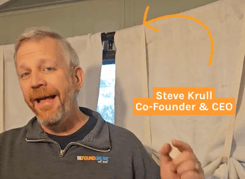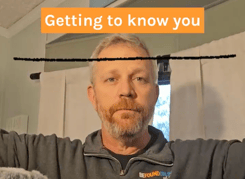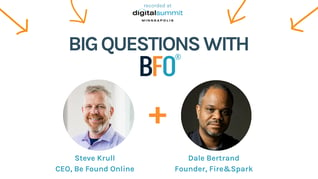
Voice search continues to evolve and transform the way we interact and search the web. It began years ago with Siri. Personal assistants like Alexa and Google Home led by advances in machine learning and AI and the increased accuracy they’ve brought have dramatically expanded its practice.
Let’s take a closer look at the voice search landscape and then explore seven ways to ensure your brand is voice search optimized.
Voice Search Then and Now
At the advent of voice search even until a few years ago, optimizing for voice search was dependent on your audience. Today, it doesn’t matter who you are, it’s a necessity.
In 2016, Comscore predicted 50% of all search will be voice search by 2020. A 2018 survey by Voicebot.ai reported 61.5% of smartphone owners use voice search monthly while 57.8 million adults in the U.S. use smart speakers (ie., Alexa). A larger percentage of adults in younger audiences may embrace voice, but the rates are rising across all age demographics.
The impact of voice search on shopping and sales punctuates the point. OC&C Strategy Consultants predicted in early 2018 that voice shopping will rise to $40 billion by 2022. That would be an increase from $2 billion at the beginning of 2018. Amazon announced 3x more purchases made via Alexa for the 2018 holiday season compared to 2017 sales.
Amazon’s announcement contained other vital information marketers need to consider though. Beyond sales, Alexa helped holiday hosts and revelers mix hundreds of thousands of cocktails. Alexa owners searched for 3x more recipes and 2x as much cooking-related advice. Alexa wasn’t all about sales, she helped people find the information they needed.
Voice is a Different Kind of Search
There are three elements to every voice search that a brand much consider.
Speaking with a smartphone or personal assistant introduces direct and unfiltered personal engagement.
People get conversational with their voice assistants. The language of the user – including dialect, vocabulary and speech pattern – becomes significant.
As a result, spoken search are the literal words used, instead of the filtered and often abbreviated typed search. This requires the brand to know the audience and understand its language.
The intent behind the search is more highly defined too.
It’s natural to be much more specific when speaking than when typing. For example, instead of typing “Starbucks coffee,” the user says, “Where is the nearest Starbucks?”
Additionally, there are the micro-moment searches – those sudden, unplanned, spur-of-the-moment searches. These searches can be prompted by an immediate plan to make a purchase, ie., buy a Starbuck’s coffee. Alternatively, they can be prompted by an informational or navigational intent, ie., “what is the best whole bean arabica?” or “what is arabica coffee?”
Immediate and relevant answers are expected.
When smartphone voice search dominated, appearing as a top result was good enough. It meant a brand had to be on top of its content, but it wasn’t essential to be number one. Personal assistants have changed this.
The conversational nature of the personal assistant like Alexa has made her answer the answer a user may get. This demands a brand’s content and information be delivered with clarity and match the intent of the user, not to mention be recognizable to search engine “bots.”
Voice Search is a Personalized Search
Voice search is the ultimate form of personalized search. Search terms are longer, frequently in question form and with clearer intent. Queries are also often locally-focused.
This uniqueness makes it imperative to ensure your content, website and business data be the solution to your audience’s search. Here are seven tips to help you be there when your audience speaks.
Focus on Question Words
A lot of voice search involves questions. “What,” “When,” “Where,” and “How” are the most common. “Who” and “Why” may also be relevant. “Which” may also be used to begin a question.
Content created around these question words should address user search intent. For example:
- “What” and “Who” searches are informational in nature and generally top-of-the-funnel. “How to” queries are also often informational but, depending on the “how to” is explained, may offer transactional opportunities.
- “Which” is a middle-of-the-funnel term as it is often used to compare brands or find “the best” product or service available.
- “When” and “Where” are bottom-of-the-funnel, transactional question words as they typically reflect an intent to take action (aka spend money).
Answer Questions
Crafting content that answers questions positions you as an authority on the subject, especially where voice search is concerned. Finding out what your customers are asking and answering those is a good place to start. Customer service representatives and CRMs are a great source for these questions. For B2B brands, sales representatives can also be a wealth of common questions. Keyword research tools such as Ahrefs.com are now offering Question-based data, as well. This shows users what related questions are available for a given search term.
When answering questions, work on conciseness and clarity. Earning a featured snippet, aka the Google Answer Box, spot enhances your credibility. Being the first answer presented (which is different than holding the top ranking) is especially the goal when personal assistants reply to inquiries with a single response.
Use Long-Tail Keywords
Specific questions asked by your audience make for excellent keywords. These questions are also longer than 3 words, making them longtail keywords. In addition to questions, you’ll want to identify other longtail keyword phrases and create copy that thoroughly addresses the subject.
Create Location Specific Content
Every brand location should have unique content that addresses the needs of the local audience. The content should contain the names of the area and/or city where it’s located. Keywords like “nearby” and “near me” are also conversational and help to position your content as part of the conversation.
Keep Local Listings Updated
Are local listings information such as name, address, and phone number (NAP) marketing or operation’s responsibility? It’s a question our President Dan Golden has pondered, but regardless of who is responsible, this NAP content is vital.
When a potential guest asks Alexa, “What are the showtimes of …?” or “When does Home Depot open?” well, you want her to give your locations hours. With personal assistants like Alexa, an updated phone number then lets her call you if prompted by the user.
Use Structured Data
Structured data is data embedded in the code of a page that makes it easy for search engines to index your data. Google provides the following example of structured data:
<script type=”application/ld+json”>
{
“@context”: “https://schema.org”,
“@type”: “Organization”,
“url”: “http://www.example.com”,
“name”: “Unlimited Ball Bearings Corp.”,
“contactPoint”: {
“@type”: “ContactPoint”,
“telephone”: “+1-401-555-1212”,
“contactType”: “Customer service”
}
}
</script>
In this example, it provides a clear name, address, and phone information. Products, events, recipes and more benefit from having structured data integrated into every page. Although a user doesn’t directly interact with this data, having it in place improves your chance of being recognized by search engines as answers to their questions.
Perform Regular Technical SEO Maintenance
You can have superior content but broken links, “page not found” and other errors interfere with search engines indexing of your web pages. Think of it this way, if the pages aren’t working right, they can’t answer the user query. This is why technical SEO has become such an important part of content. Monitoring all of your technical SEO elements prevents this from being an issue and lets your content shine.
The Good News About the Voice Search Revolution
SEOs and digital marketers started talking about voice search in 2017. It was big then and it’s bigger now. The good news is that it’s really only just started. Increased sales of personal assistants like Google Home and Alexa, the presence of Cortana and Siri on PCs and more accurate smartphone search results, however, will quickly change that.
Now is the time to embrace voice search. Looking for ideas on how to do it with your content and website, let’s start a conversation.

Dan Golden
Dan Golden is a veteran digital marketing executive & speaker. He liked to predict the future of digital marketing and is damn good at it. Beyond trendspotting, he has an insatiable desire to know what works and that means spending time auditing accounts, testing tactics, and diving into analytics. Dan is also a Forbes and HuffPost contributor, as well as a Lecturer at Northwestern University and DePaul University.
CATEGORIES
SUBSCRIBE TO OUR BLOG
Stay up to date with the latest industry best practices in digital marketing!























.png?width=339&height=179&name=Webinar%20Banner%20(1).png)



.png?width=339&height=179&name=July%20Webinar%20(Newsletter).png)

.png?width=339&height=179&name=Webinar%20Banner-April-02%20(1).png)
%20(4).png?width=339&height=179&name=Webinar%20Banner-May-02%20(1)%20(4).png)




.png?width=339&height=179&name=March%202023%20Webinar%20Ad%20(autoresponder).png)






























































